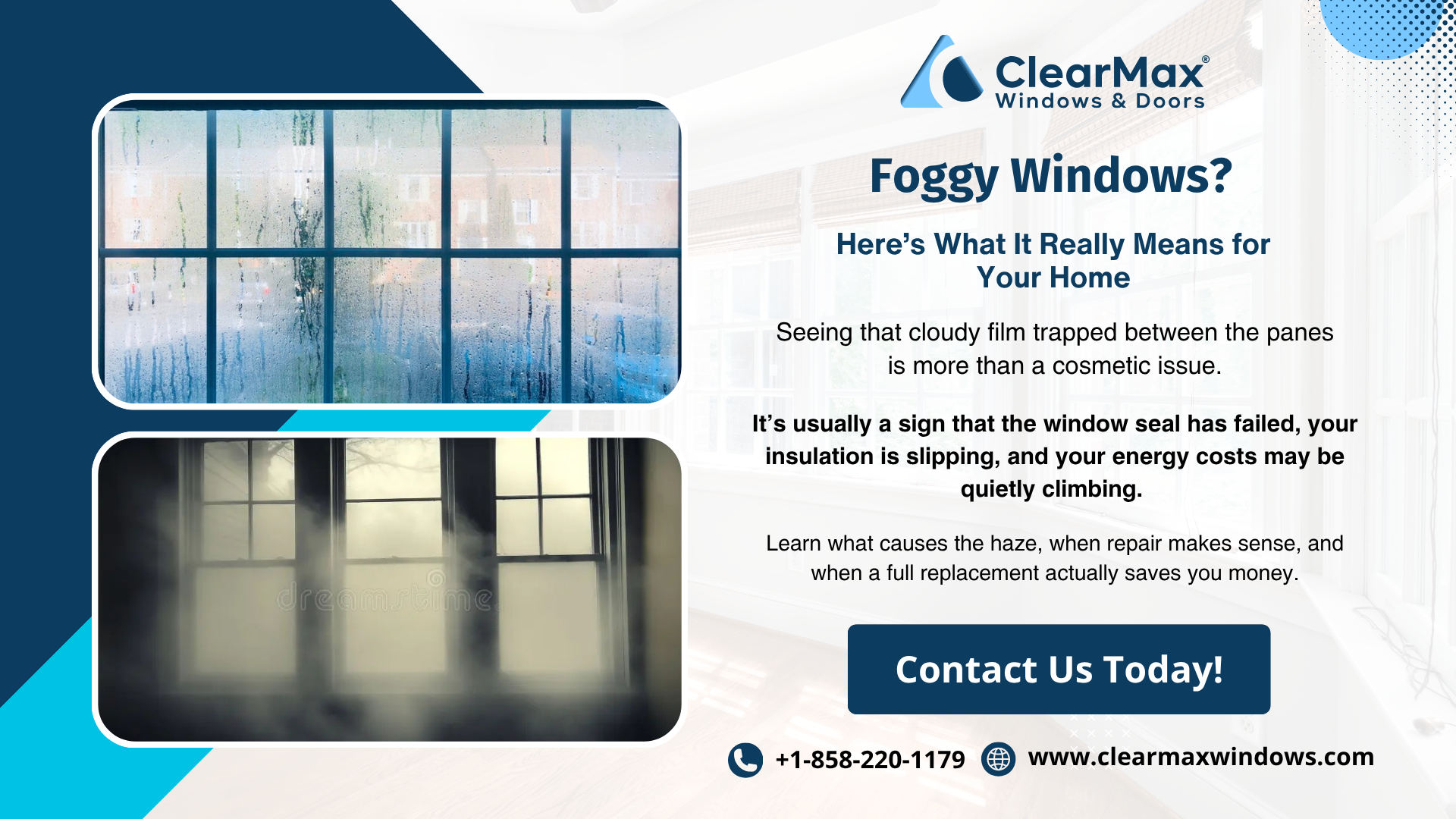What to Do When Your Windows Are Fogging Up Between the Panes: Causes & Solutions

In case you have walked through a window and seen a cloudy part captured inside the glass, then you are in good company. The fog formed between the panes is among the most frequent indicators that the windows are losing their functionality, which is noticed by the homeowners. Nonetheless, although it appears to be merely a problem of moisture, in reality, it is ascertaining the condition of the windows.
Let’s closely examine the situation, discuss its causes, and also see what practical measures you can take.
Why Your Windows Fog Up Between the Panes
Insulated Glass Units, or IGUs, are the main component of modern windows. These units consist of two or three pieces of glass, and a vapour seal which guarantees a proper insulation of your house and a pleasant atmosphere.
When the seal begins to deteriorate, the moisture from outside invades the area between the panes. As there is no ventilation in the pocket between the glass, the moisture remains there and you will experience the well-known cloudy, hazy or streaky fog.
Most of the time, this happens because:
- The window is simply aging
- Coastal salt air has worn down the seal
- High heat exposure caused the seal to expand and contract
- A small impact weakened the edge of the glass
- Poor installation left the seal more vulnerable
Here in Southern California, the combination of sun exposure and coastal humidity makes seal failure more common than in cooler climates.
Is Fog Between the Panes a Big Deal?
Short answer: yes — but not for the reason most people think.
Fog itself isn’t the problem. The broken seal is.
A seal failure means:
- Your window has lost a chunk of its insulation
- Indoor temperatures become harder to control
- Your HVAC system works overtime
- Energy efficiency drops
- The glass may start showing mineral streaks that never wipe off
It also means the window is no longer doing the job you paid for — keeping your home comfortable, clear, and protected.
Can You Fix Foggy Windows Without Replacing Them?
Homeowners attempt several methods, however knowing what is actually effective and what merely provides a temporary solution is crucial.
1. DIY Defogging
Drilling tiny holes for the moisture to escape is one of the methods used by some. Although, this practice may temporarily remove the fog but the window will not recover its insulation. The seal has already broken.
2. Professional Defogging Services
These companies remove the fog and dry out the interior space. Again, this doesn’t restore energy efficiency or long-term performance. The fog usually returns.
3. Replacing the IGU Only
In some cases, you can replace just the insulated glass unit and keep the frame. This can be a good option if the frame is still in great shape.
4. Full Window Replacement
If your windows are older, drafty, or showing multiple problems, replacing the entire window makes more sense — especially in a coastal climate where durability matters.
How to Know When It’s Time to Replace vs Repair
Here are a few signs replacement is the smarter move:
- The fog returns even after cleaning
- You feel drafts around the window
- Your energy bills keep creeping up
- The frame is cracked, warped, or sun-faded
- Multiple windows show the same issue
- You’re already planning a home upgrade or remodel
If your windows are more than 15–20 years old, seal failure is usually part of the natural lifespan. Most homeowners choose replacement at that point because the energy savings alone make up the difference.
Why This Happens So Often in Coastal San Diego
Salt air and moisture wear down window seals faster than in inland areas. UV exposure from constant sunlight doesn’t help either. With the passage of time, windows of even the best quality can eventually lose their insulating gas and become moist inside. Therefore, it is really worth using the windows which are meant for coastal areas, i.e., strong seals, durable frames, and coated hardware.
Next Actions You Can Take
When you often notice fog or haze in between the window panes, it usually means that the window has gone bad and is no longer functional. The certified installer can promptly determine if you will need just a new insulated glass unit (IGU) or a complete window replacement.
ClearMax is assisting homeowners all over the day-to-day life of San Diego in the replacement of their old or foggy windows with energy-efficient ones that are made to stand the coastal climate, sun, salt air, and daily use. In case you want to have a clearer view (in fact) you can book a visit or ask for a quote anytime you want.
Your house has to be a place of comfort, brightness, and clarity, not vagueness.
Seeing that cloudy film trapped between the panes is more than a cosmetic issue. It’s usually a sign that the window seal has failed, your insulation is slipping, and your energy costs may be quietly climbing. Learn what causes the haze, when repair makes sense, and when a full replacement actually saves you money.
📧 info@clearmaxwindows.com | 📞 +1-858-220-1179







